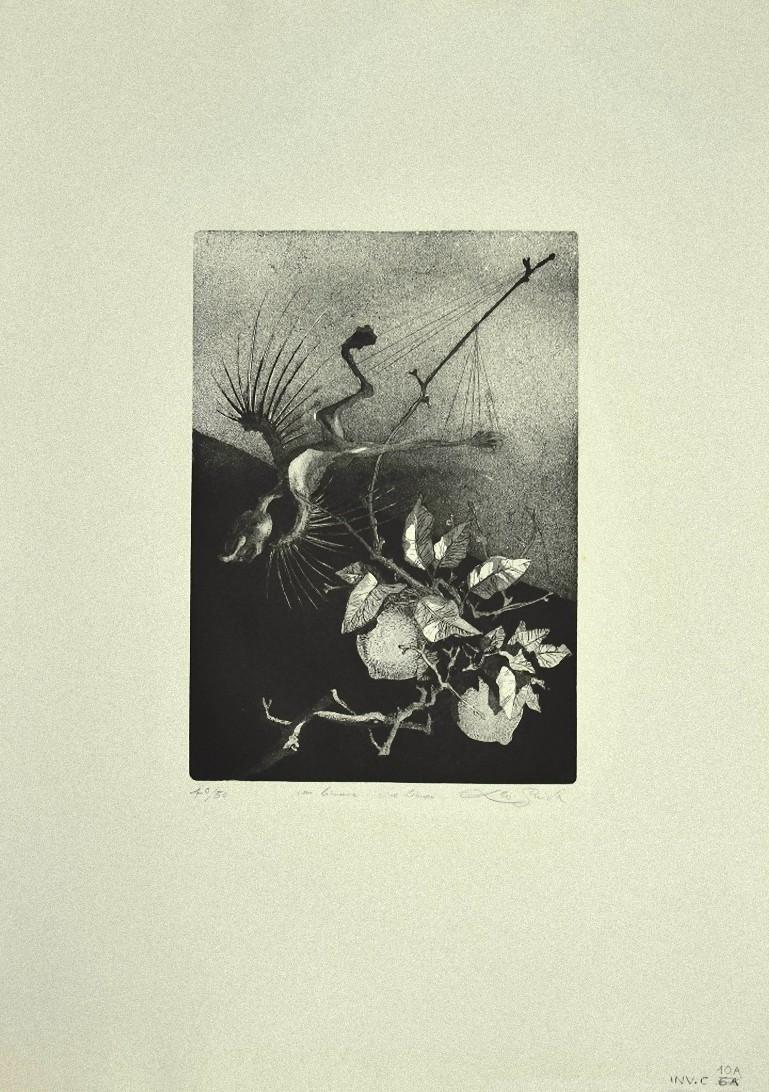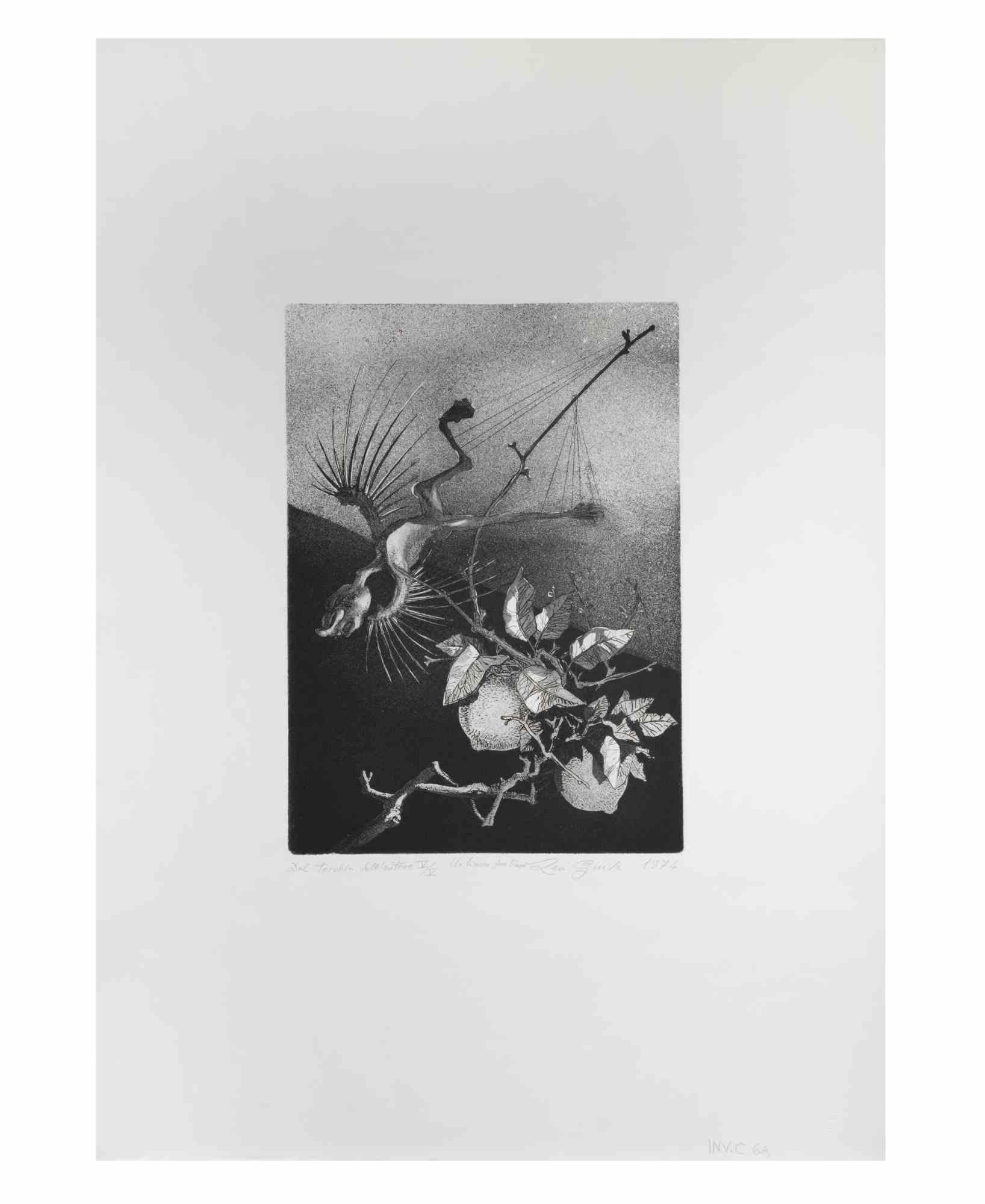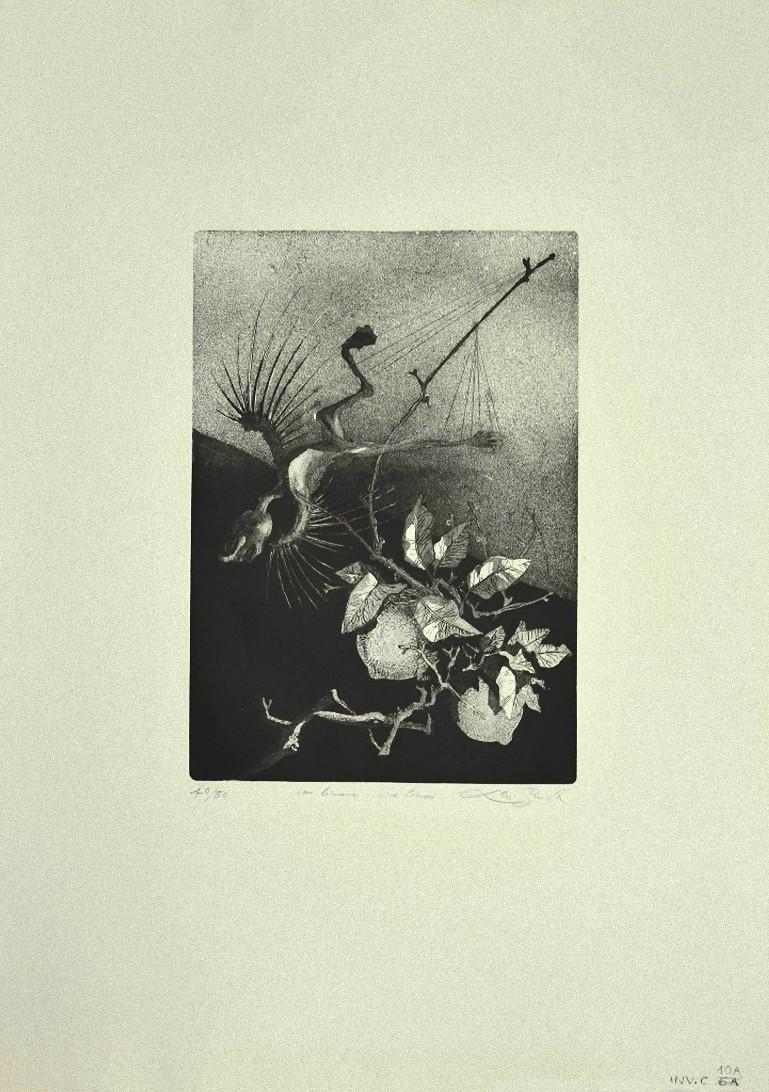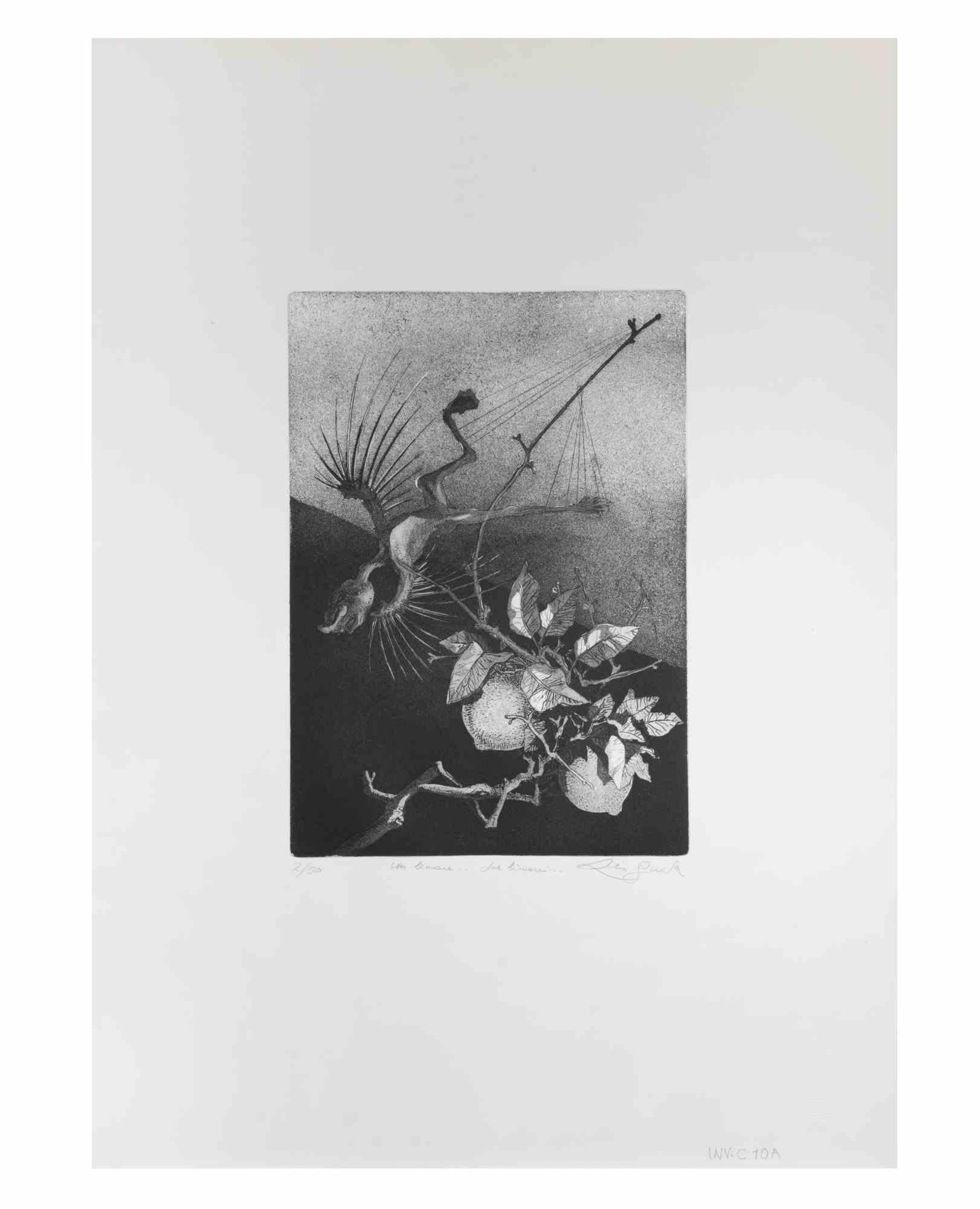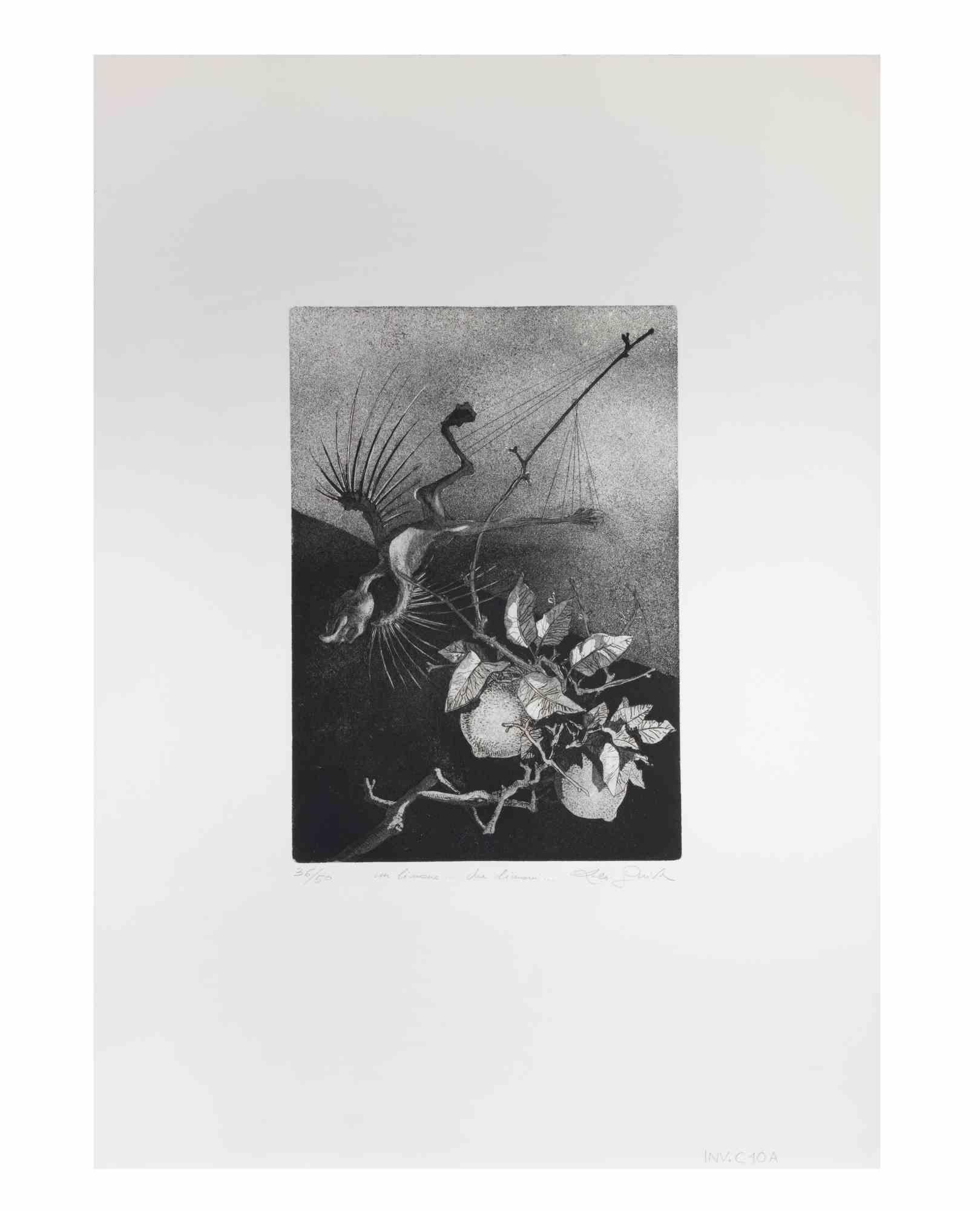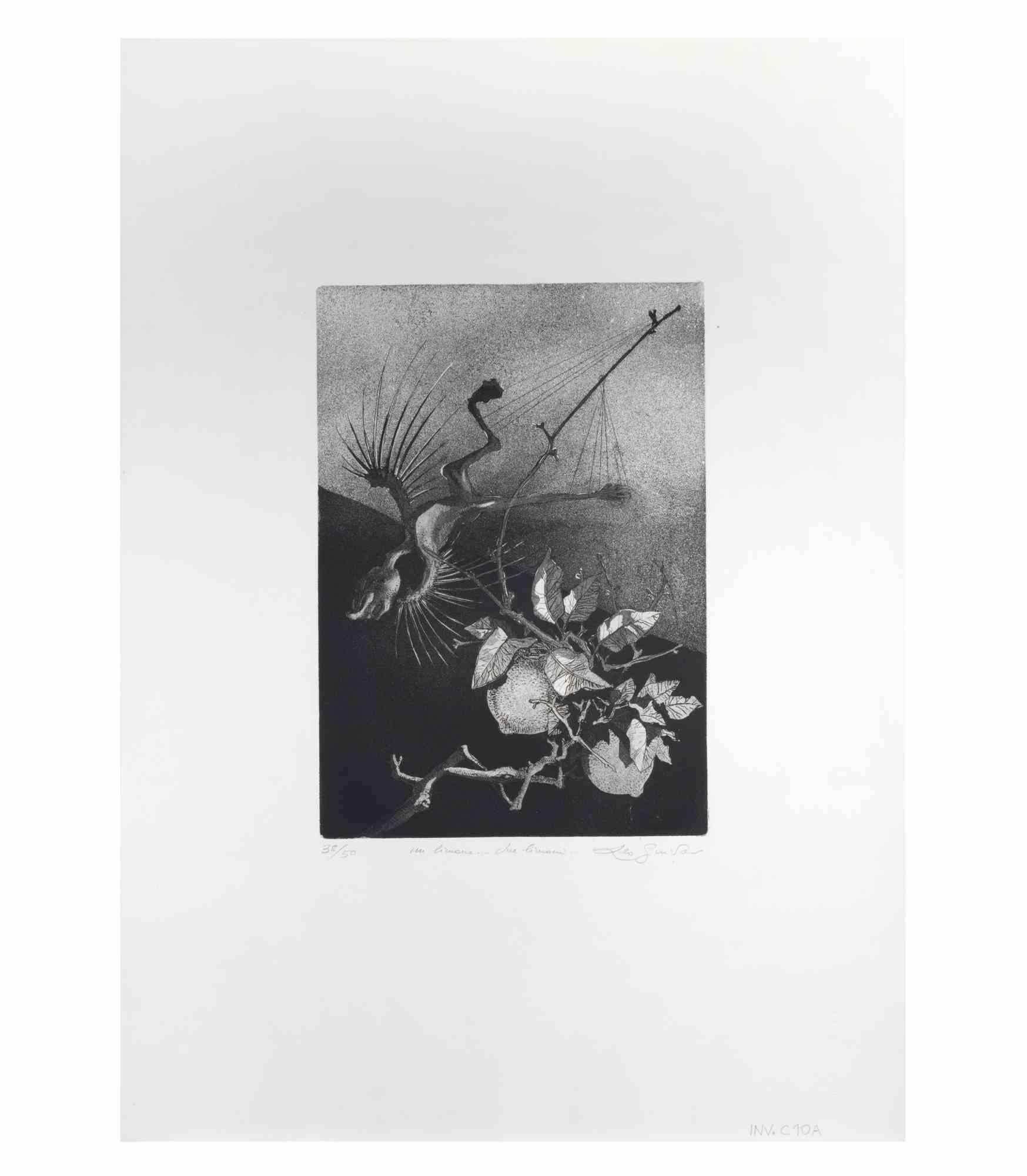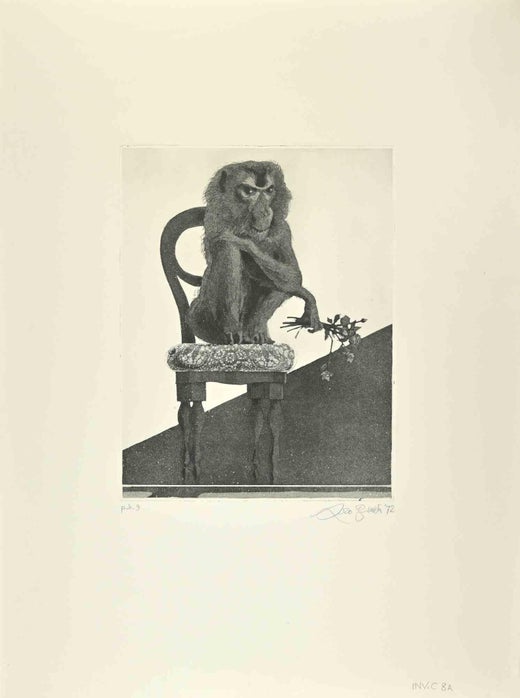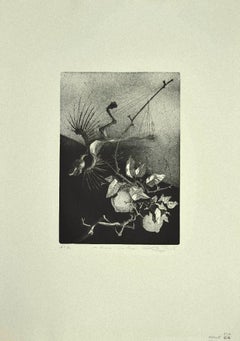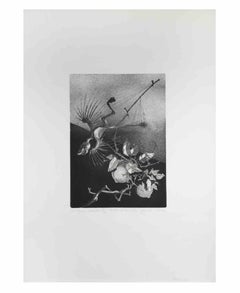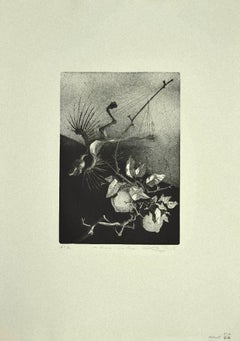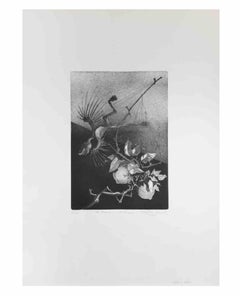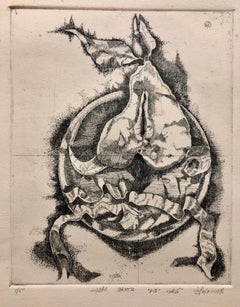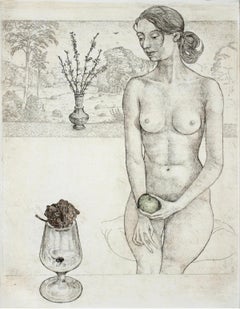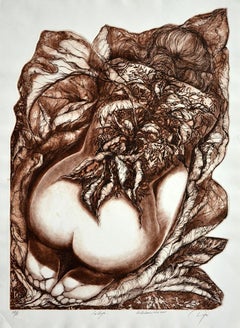Leo GuidaOne Lemon, Two Lemons - Original Etching by Leo Guida - 19751975
1975
About the Item
- Creator:Leo Guida (Italian)
- Creation Year:1975
- Dimensions:Height: 27.56 in (70 cm)Width: 19.69 in (50 cm)Depth: 0.04 in (1 mm)
- Medium:
- Movement & Style:
- Period:
- Condition:Insurance may be requested by customers as additional service, contact us for more information.
- Gallery Location:Roma, IT
- Reference Number:Seller: M-1191641stDibs: LU65038082302
Leo Guida
Prolific throughout the 1960s and 1970s, artist Leo Guida was an influential Italian painter and printmaker.
Beginning in 1969, Guida served as a teacher for nearly two decades at the Liceo Artistico in Latina. While he worked with watercolor paints to create much of his known art, he produced a wide range of graphic prints that is representative of his talents.
Guida worked with Chinese ink and was fluent in a variety of printmaking techniques, which included chalcography, engraving and aquatint. The latter is a technique named for its resemblance to watercolor or ink wash, while engraving is a method of making prints by incising lines into a metal plate with a sharp tool called a burin. Chalcography sees an artist engraving on copper or brass plates.
Guida made art in all kinds of styles over the course of his career. The bulk of his drawings and etchings are richly detailed and fantastical — they feature nudes, imagery from nature and depictions of mythological creatures. Guida’s works on paper show the influence of Spanish printmaker and painter Francisco Goya and are also inclusive of Surrealist flourishes and themes.
Find original Leo Guida drawings and watercolors, prints and paintings on 1stDibs.
- ShippingRetrieving quote...Shipping from: Roma, Italy
- Return Policy
More From This Seller
View All1980s Contemporary Figurative Prints
Etching, Cardboard
1970s Contemporary Figurative Prints
Etching
1980s Contemporary Figurative Prints
Etching, Cardboard
1970s Contemporary Figurative Prints
Etching
1970s Contemporary Figurative Prints
Etching
1970s Contemporary Figurative Prints
Etching
You May Also Like
20th Century Surrealist Still-life Prints
Etching
Early 2000s Contemporary Abstract Prints
Paper, Etching
1960s Surrealist Still-life Prints
Etching
Early 2000s Contemporary Nude Prints
Ink, Etching, Screen, Engraving
20th Century Surrealist Figurative Prints
Etching
1970s Surrealist Still-life Prints
Etching
